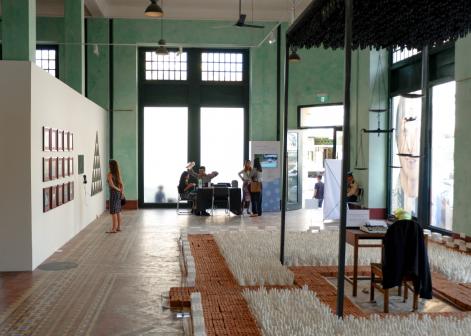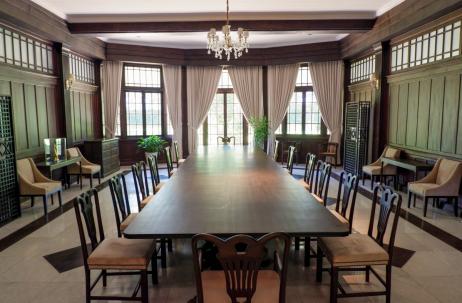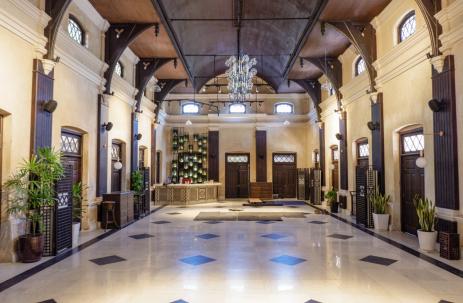
For many decades Yangon’s colonial heritage buildings have been left to rot, must and moulder in the city. And while the sight of these grand old buildings in various states of decay does contain a perverse kind of charm, the reality is that decades of neglect have left many of these architectural treasures close to the brink of and—in some cases—past the point of total collapse.
But, by the turn of the decade, things started to change. Yangon Heritage—led by celebrated historian Thant Myint-U—has played an indispensable role in preventing Yangon’s colonial history from slipping off the map, and, in the last few years, several high-profile buildings that have been rescued from ruin are starting to open their doors to the public once again.
The Secretariat
No other building in the city packs quite the same historical heft as the legendary Secretariat. Administrative headquarters to British Burma, and later scene to the assassination of independence hero Aung San, the Secretariat really is one of the places where you can feel the weight of the past on your shoulders.
You can roam around the courtyard by yourself for free, but it’s well worth coughing up the 15,000 kyats (or 3,000 kyats for locals, see timetable) for a one-hour walking tour that takes you through some of the key rooms, corridors and staircases of the building. This includes Parliament House (check out the Union Jack design on the ceiling), a peek into the conference room where Aung San and his ministers were murdered, and the astounding double staircase which wraps its way up the minister’s office.
The Secretariat is still a work in progress. American franchises KFC and Krispy Kreme along with a Singaporean-run spa have opened to mixed reception in the northwestern section of the sprawling, hallowed grounds.
The five-year restoration project—set to include a museum, shops and restaurants—is scheduled for completion sometime in 2021, so expect lots of dust and drills on your tour. Don’t let that put you off though; even in a half-finished state, the Secretariat is already a top tier Yangon attraction.
Rosewood Hotel
Fancy doesn’t even begin to describe Rosewood Yangon. The imposing multi-storied pillared behemoth was originally built under the British as the New Law Courts, before passing through various government bodies post-independence.
Now, fully renovated and restored, it’s arguably Yangon’s foremost luxury hotel. With rooms starting at US$350, you’ll need to be fabulously wealthy to stay here, but you can still pop in to revel in the sheer lavishness of the place, take in one of the temporary exhibitions (at the time of writing a fun replica Da Vinci installation was on-show), and treat yourself to some lunch from the a la carte menu.
The Tourist Burma Building
The Tourist Burma Building has enjoyed a long and colourful history. Built in 1905 as a department store, the building (which overlooks Sule Pagoda) was heavily damaged during World War Two, and later came under government control as the tourism ministry—a function it maintained until it was unceremoniously abandoned (along with the Secretariat) in 2005 when the government relocated to Naypyidaw.
Revitalised by the work of heritage and craft non-profit Turquoise Mountain, the building, as with the Secretariat, has reopened in a limited capacity. But a grand opening is scheduled for sometime in early 2020, and the venue plans to host a series of art and photography exhibitions, as well as hosting programmes focusing on social change and urban renewal within the country.
The Pegu Club
During its pomp in the late 19th and early 20th centuries, the Pegu Club was effectively off-limits to Burmese citizens. In fact, says the club’s executive director Deborah Kyaw Thaung, several establishments in British Yangon (including the Strand) went as far as hanging a sign on the door which read: "No Burmese, no dogs." Words fail.
Fortunately, times have changed, and the club—which in 2017 was just a couple of monsoon seasons away from caving in entirely—is now well underway to being restored to its former glories. Intended as a city retreat for British Burma’s aristocracy, the club’s teak barracks, manicured lawns and patioed courtyards foster a genuine time warp atmosphere.
The club is not yet open on a day-to-day basis to the public. It hosts formal events such as weddings, concerts and receptions, but you’ll have to hold out till Christmas 2020 to sip a Pegu cocktail at the venue that shares its name. One thing is for certain: when it does finally open, the Pegu Club will likely become one of the most prestigious establishments in Yangon—all over again.









